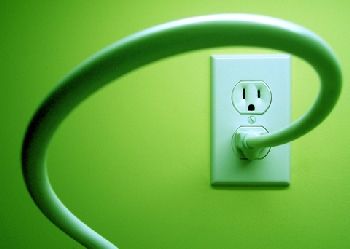
Publisher:
Bonnie King
CONTACT:
Newsroom@Salem-news.com
Advertising:
Adsales@Salem-news.com

~Truth~
~Justice~
~Peace~
TJP
Jul-21-2009 19:20

 TweetFollow @OregonNews
TweetFollow @OregonNews
BPA Will Raise Rates for Power and Transmission
Salem-News.comThe new rates will remain in place until October 2011.
 Courtesy: inkycircus.com |
(PORTLAND, Ore.) - The Bonneville Power Administration announced today numerous rate changes that are expected to take effect October 1st, 2009.
Rates for customers that buy power and transmission will increase on average by 6 percent. Transmission rates will stay the same. Power rates will increase by an average of 7 percent. This is the first power rate increase since 2002 and it’s driven by both rising costs and decreasing surplus revenues.
The company says power customers will also receive $163 million in returned overcharges due to a 2007 U.S. Ninth Circuit Court decision. Financial benefits for residential and small farm consumers of investor-owned utilities, which are based on BPA’s power rates as well as other factors, will be $173 million.
BPA’s relatively new rate for wind integration services has been reduced substantially from the initial proposal due primarily to efforts from the wind power industry to improve their operational practices.
The new rates cover the agency’s fiscal years 2010-2011. Under the rates, the average priority firm rate for wholesale power is $28.77 per megawatt hour. That compares to the previous rate of $26.90 per megawatt hour.
“Nobody wants a rate increase, and we have worked very hard to keep the increase as low as possible,” BPA Administrator Steve Wright said. “We tightened our belt and worked with stakeholders to keep the increase to a minimum, while honoring our commitments to fish, wildlife and maintaining system reliability.” BPA says the primary causes of rising costs are actions to improve safety and reliability of the Columbia Generating Station nuclear plant and actions to protect threatened and endangered salmon. BPA does not own or operate the nuclear plant, located in Hanford, Wash., but markets the power produced by the plant.
The power rate increase is down from the initial proposal of 9.4 percent in February, and it is considerably lower than the potential 15 to 20 percent increase that looked likely in early April. At that time, BPA’s financial picture had deteriorated significantly due to below average water and the poor economy.
BPA stated in a press release, "Once the threat of a higher rate increase became clear, BPA identified more than $100 million in cost reductions through a public cost review process. These cost reductions, combined with an innovative agreement with the U.S. Treasury Department to provide an expanded line of credit, allowed the power rate increase to be brought back down to 7 percent."
In other rates developments, BPA has instituted a wind integration rate of $1.29 per kilowatt per month, which was reduced from the initial rate proposal of $2.72 per kilowatt per month. This is due primarily to actions taken by wind generators to reduce their use of BPA generation for reliability when wind power ramps up or down unexpectedly.
“The wind integration rate is part of a larger agency strategy to bring more of this renewable resource into the system that would otherwise not occur.” Wright said. “There’s been an explosion of wind power on the BPA system, especially since 2005. We’re proud of this accomplishment, but it has led to operational challenges including risks to reliability and substantial costs. The wind integration rate, which has been reduced due to collaboration with the wind power industry, will help address those issues and put us in a position to bring more wind on board than would have been possible just a year ago.”
BPA says their aggressive approach to integrating wind is one of the reasons the agency continues to have the largest ratio of wind relative to load of any transmission provider in the United States.
The new rates will remain in place until October 2011. How the rates will affect retail rates will vary with individual utilities due to a number of variables such as what portion of a utility’s power or transmission is purchased from BPA.
BPA’s rates for its direct service industries assume power will be sold to the Alcoa Ferndale and Columbia Falls aluminum plants, although that decision will ultimately be made through a contract negotiation process. BPA rejected a proposal from Alcoa for a variable power rate tied to world aluminum prices but has established a rate that will be the basis for negotiations of new contracts with aluminum companies. These contract negotiations will be subject to a public process.
Source: BPA
Articles for July 20, 2009 | Articles for July 21, 2009 | Articles for July 22, 2009
Quick Links
DINING
Willamette UniversityGoudy Commons Cafe
Dine on the Queen
Willamette Queen Sternwheeler
MUST SEE SALEM
Oregon Capitol ToursCapitol History Gateway
Willamette River Ride
Willamette Queen Sternwheeler
Historic Home Tours:
Deepwood Museum
The Bush House
Gaiety Hollow Garden
AUCTIONS - APPRAISALS
Auction Masters & AppraisalsCONSTRUCTION SERVICES
Roofing and ContractingSheridan, Ore.
ONLINE SHOPPING
Special Occasion DressesAdvertise with Salem-News
Contact:AdSales@Salem-News.com

googlec507860f6901db00.html



Terms of Service | Privacy Policy
All comments and messages are approved by people and self promotional links or unacceptable comments are denied.
[Return to Top]
©2025 Salem-News.com. All opinions expressed in this article are those of the author and do not necessarily reflect those of Salem-News.com.